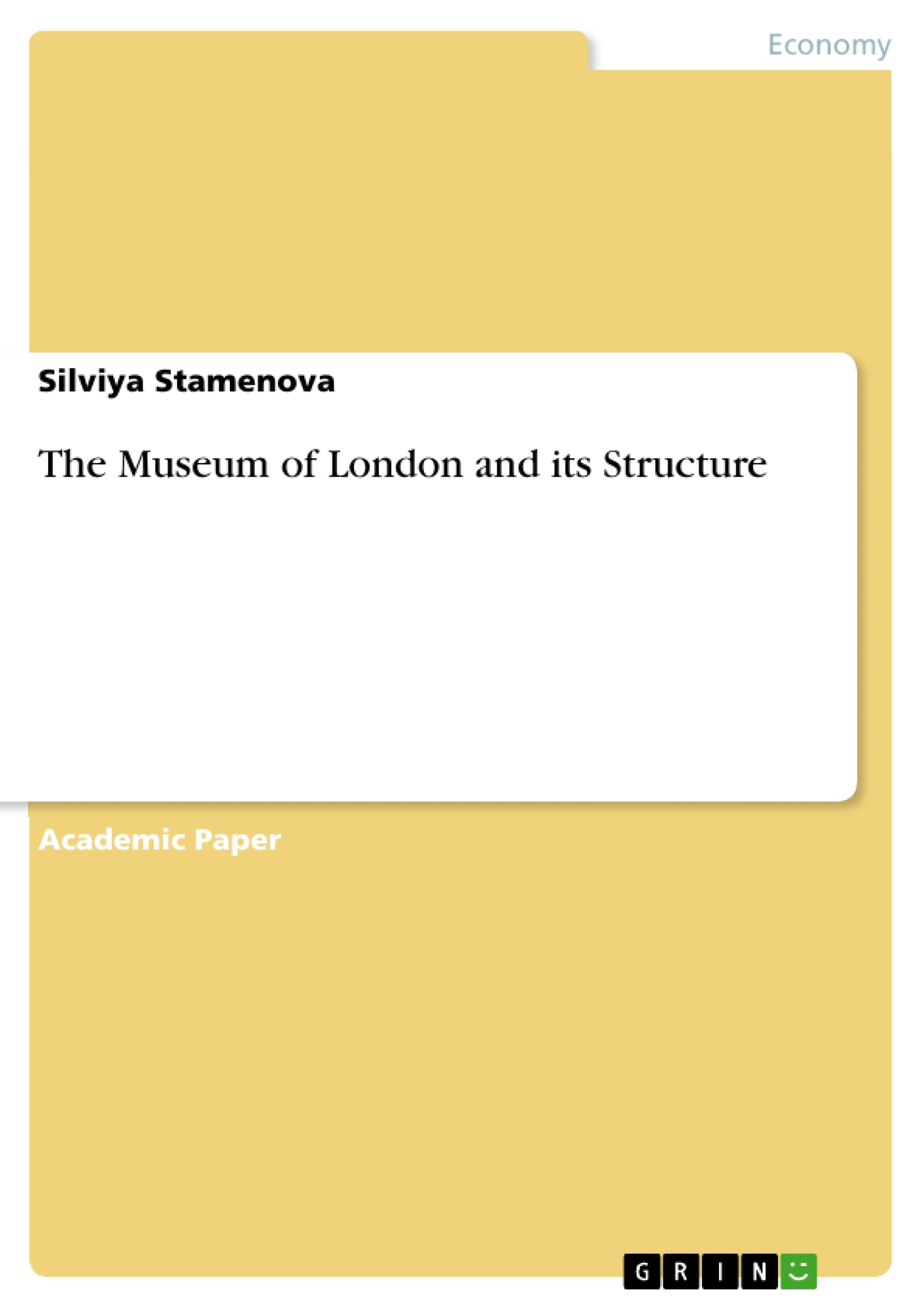It is often amazing to see the complete transformation of a particular place, or even a whole area; that is where the story of the Museum of London as tourist attraction starts from. Opened in the distant year of 1976 on the London Wall, that remarkable venue for Londoners and tourists represents the moments of London and its citizens year-on-year.
Inhaltsverzeichnis (Table of Contents)
- Mission, strategic objectives and aims
- Acknowledgement of how the charity status operates
- Key points from the latest annual report
- CORPORATE GOVERNANCE
- EXTERNAL ENVIRONMENT
- PEST ANALYSIS
- Political factors
- Economic factors
- Social factors
- Technological factors
Zielsetzung und Themenschwerpunkte (Objectives and Key Themes)
This briefing examines the Museum of London's mission, strategic objectives, and aims, exploring its governance, external environment, and the challenges it faces. It also highlights the Museum's commitment to social responsibility and its efforts to increase visitor engagement and financial sustainability.
- Mission, Strategic Objectives and Aims of the Museum of London
- Corporate Governance and its implications for the Museum
- External Environment and PEST Analysis
- Financial Sustainability and Income Generation
- Social Responsibility and Community Engagement
Zusammenfassung der Kapitel (Chapter Summaries)
- Mission, strategic objectives and aims: This section outlines the Museum of London's core purpose, strategic goals, and how it aims to achieve them. It highlights objectives like attracting more visitors, becoming better known, engaging more children, and generating sufficient income.
- Acknowledgement of how the charity status operates: This section explains the Museum's charitable status, including its funding sources, and details its charitable objectives like preserving London's heritage, delivering educational programs, and raising awareness about the historical context of London.
- Key points from the latest annual report: This section provides an overview of the Museum's recent successes and developments, highlighting achievements in multimedia channels, interactive features, and social communication. It also mentions the Museum's efforts to enhance gallery spaces, transform its digital capacity, and invest in sustainable ecology projects.
- CORPORATE GOVERNANCE: This section discusses the Museum's adherence to good governance practices, outlining the roles and responsibilities of the Board of Governors, the Director, the Treasurer, and the Secretary. It also highlights the importance of volunteer engagement and the Museum's commitment to upholding ethical standards.
- EXTERNAL ENVIRONMENT: This section introduces the PEST analysis framework and explains its use in assessing the political, economic, social, and technological factors that might affect the Museum. It then delves into the political factors, highlighting the uncertainty surrounding Brexit and its potential impact on the Museum's visitor numbers and cultural stereotype.
Schlüsselwörter (Keywords)
Museum of London, strategic objectives, corporate governance, PEST analysis, external environment, financial sustainability, social responsibility, visitor engagement, community engagement, Brexit, heritage preservation, education, digital transformation, volunteer engagement, charitable status, funding sources.
- Quote paper
- Silviya Stamenova (Author), 2017, The Museum of London and its Structure, Munich, GRIN Verlag, https://www.grin.com/document/427767



